Want to see Sociabble in action?
Our experts will answer your questions and guide you through a platform demo.
Why should a company care about internal communications? Simple. Because without an effective comms program, it’s virtually impossible to succeed in the modern business world.
Especially with the rise of hybrid work scenarios and digital technology changing the business landscape as we know it.
Indeed, internal communication has become a mission-critical function that directly impacts employee engagement, retention, productivity, and brand reputation. With employees spread across geographies and work environments, keeping everyone aligned and informed is a major challenge.
Poor internal communication can lead to disengaged employees, missed goals, duplicated efforts, and even high turnover. But when done right, internal comms becomes a powerful engine for business performance. It’s essentially the key to business success.
Have we made a compelling case? Well, we’re just getting started. In this guide, we’ll define internal communication, explore its different types and key challenges, dive into strategies and tools that work, and highlight how Sociabble is uniquely positioned to make your internal comms seamless and impactful. Basically, everything you need to know.
Ready to jump in? Good. Let’s go!
What Is Internal Communication?
Internal communication refers to the way information flows within an organization, ensuring that employees, from the C-suite to the frontline, stay informed, engaged, and aligned. It’s the foundation for sharing corporate updates, operational guidance, company culture, values, and more.
Unlike external communication, which targets customers and stakeholders, internal communication is employee-facing and supports everything from day-to-day collaboration to long-term strategic alignment.

Internal Communication vs. Employee Engagement vs. Employer Branding
These terms are sometimes used interchangeably, but they’re not the same. In this section, we’ll break down how internal communication differs from, and contributes to, employee engagement and brand advocacy.
While closely related, these concepts serve different purposes. Internal communication is about the how and what of messaging within the organization. Employee engagement reflects how employees feel about their work and company. Employer branding via brand advocacy is the external perception of your company as a great place to work.
An effective internal communication strategy strengthens engagement and supports advocacy, giving employees the tools and motivation to share their pride externally. You see? It’s all connected.
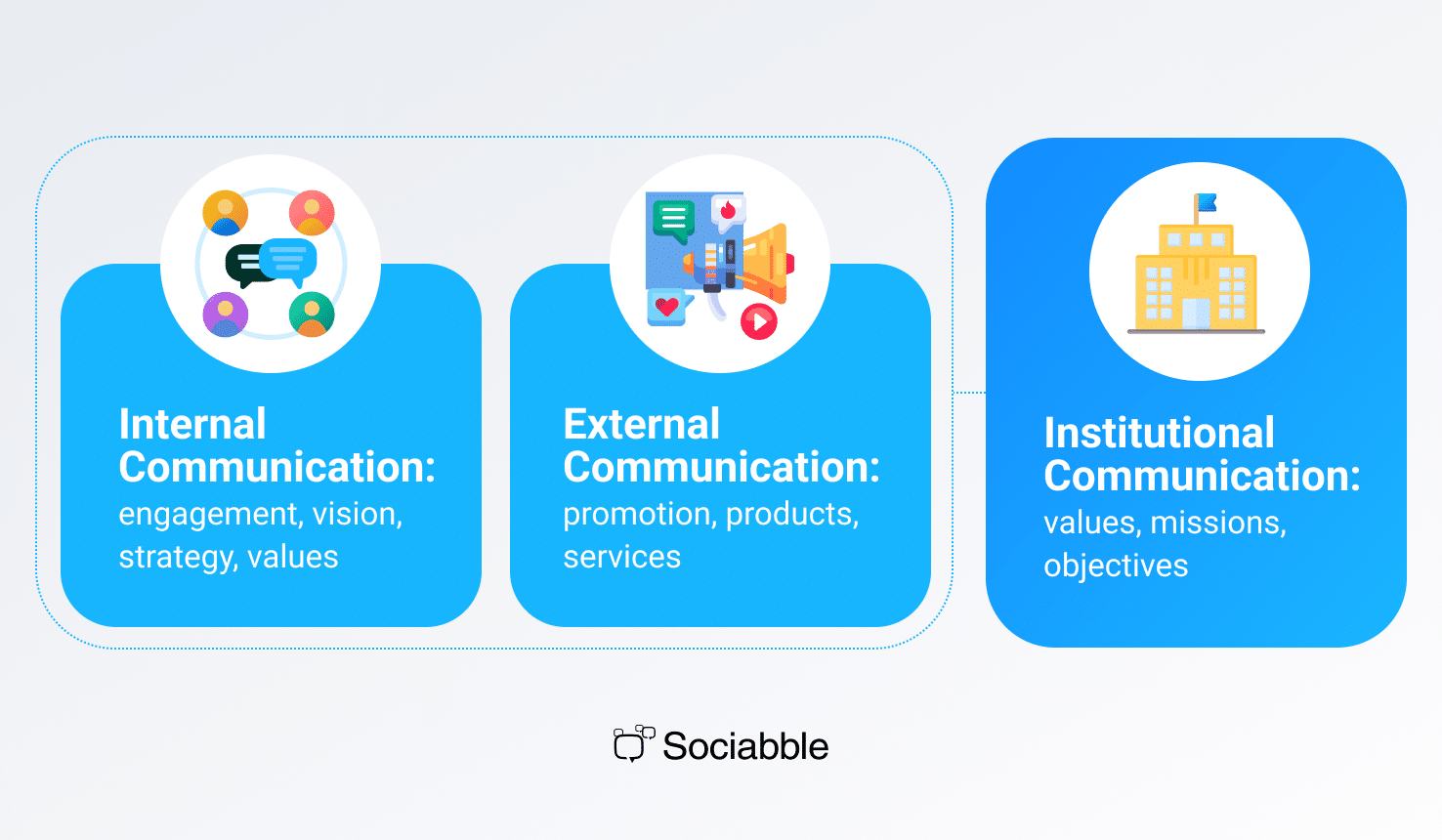
Why Is Internal Communication Important?
Internal communication is important due to its direct impact on company culture, alignment, and long-term business outcomes. The benefits are extensive, and they aren’t simply nice-to-have’s, but critical components for business success. More specifically, internal communication is critical because it:
- Builds trust and transparency
- Aligns everyone with company’s vision and goals
- Improves employee morale and retention
- Increases productivity and reduces friction
- Enables crisis management and change readiness
Essentially, it’s the glue that keeps your people connected to your mission—especially in times of transformation or disruption.

Types of Internal Communication
Not all internal communication flows the same way. Let’s look at the different forms of communication that power daily operations, employee engagement, and strategic alignment across your business.
Internal communication can be broken into three core types:
Top-Down Communication
Information flows from leadership to employees. Think strategic announcements, vision setting, or major policy updates. This type of communication is necessary for issuing directives, keeping employees aligned, and promoting company culture.
Bottom-Up Communication
Feedback, ideas, and insights flow from employees to leadership, which is essential for innovation and inclusion. Also called “Upward Communication,” this type of information stream is crucial for keeping employees engaged and productive.
Peer-to-Peer Communication
Colleagues connect across departments and geographies. Peer-to-peer communication fosters collaboration, learning, and community. Also called “Horizontal Communication,” this kind of information sharing prevents the formation of silos, enhances cohesion, and improves collaboration.
Beyond these three main categories, there are subcategories of communication that are important to know. These include leadership and managerial communication, change communication, crisis communication, frontline employee communication, and remote and hybrid communication. Each plays a role in navigating complexity.
Change Communication
This kind of communication is an essential component of change management. Change communication keeps the workforce informed and aligned during a time of transformation, be it digital, geographic, strategic, or all of the above.
Frontline Employee Communication
To keep a connection alive with employees on the frontlines, companies need unique tools and strategies. This might include comms with factory staff, retail workers, sales teams, delivery personnel, or anyone outside the physical office. Mobile technology can play a huge role in this kind of communication and improve long term frontline retention.
Remote and Hybrid Communication
While similar to frontline communication, there are some differences. Remote and hybrid employees often have more access to office tools, but not the geographic proximity.
To succeed, companies need asynchronous and digital-first strategies to keep remote workers connected, as well as other internal communication best practices. Like frontline workers, remote workers also benefit from mobile-first communication platforms.

Internal Communication Challenges
Even with the best intentions, companies often run into roadblocks when trying to communicate effectively. Here are some of the most common communication challenges that can derail internal communication efforts.
- Lack of leadership buy-in. When company leaders aren’t invested in a comms initiative, it seldom succeeds.
- Remote Work and Hybrid Challenges. If remote workers can’t access the same information as office workers, things quickly fall apart.
- Employee Burnout and Stress. It’s critical to keep employees actively engaged. If they’re suffering from information overload or a demoralizing work load, they’ll simply tune out.
- Poor Feedback. Feedback generates engagement. When employees have no voice, they tend to lose interest, not to mention address problems that only they can see.
- Lack of Transparency. When goals, strategies, and results aren’t shared with staff, it can hurt morale and add to confusion. Employees give their all for organizations they know they can trust.
To learn more about overcoming these kinds of comms obstacles, you can check out our article, “Communications Challenges in the Workplace: How to Overcome Them.”
Top Tools for Internal Communication
Your comms tools will ultimately be a major factor in the success of your internal communication program, because they will ensure that your messages actually get through. Essentially, your internal communication is only as strong as the toolkit you use. Here’s a quick overview of essential tools that help teams stay connected and aligned, especially in large, dispersed organizations.
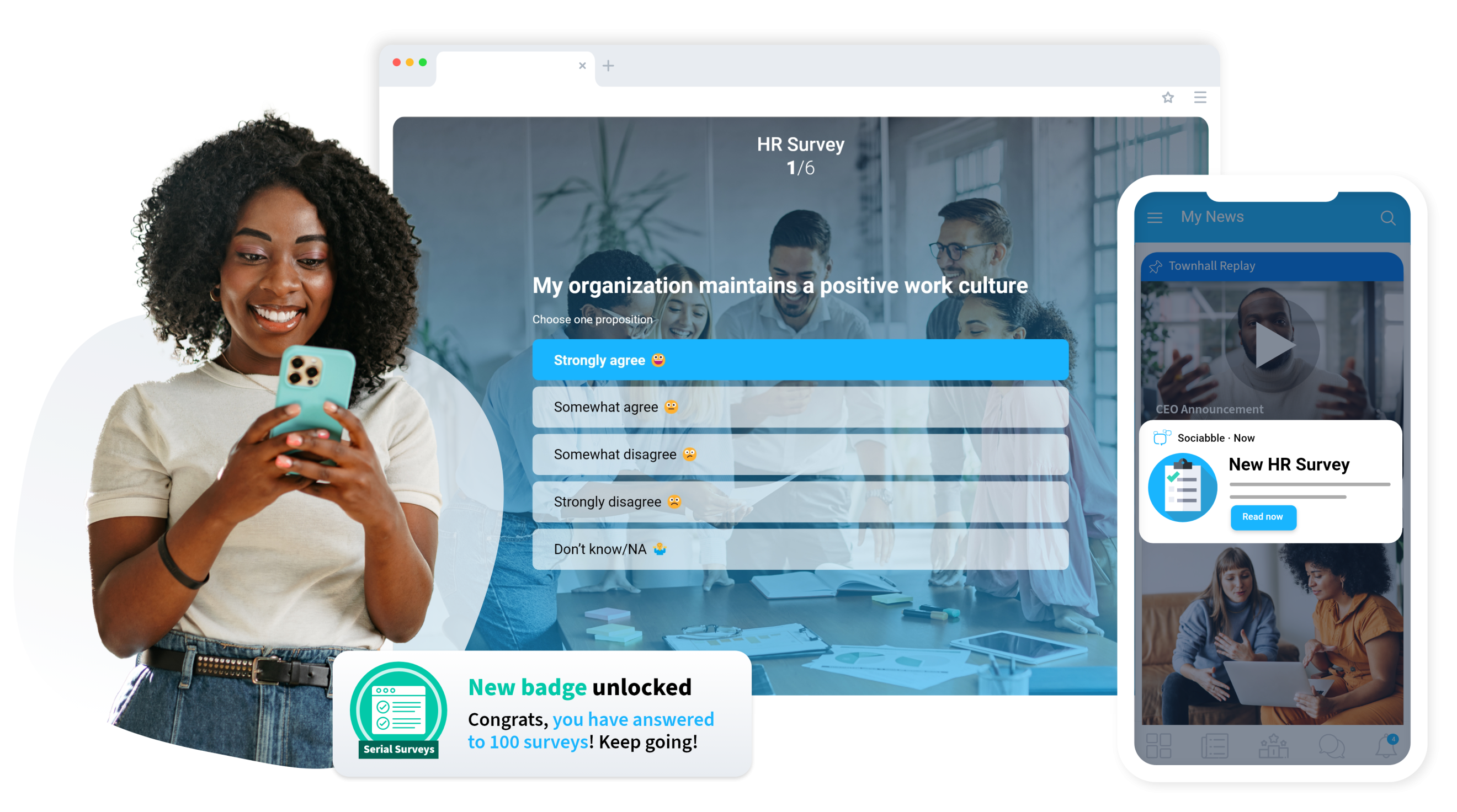
- Employee Survey Tool – Ideal for gathering insights
- Employee Recognition Tool – Boosts morale and increases engagement
- Branded Mobile App – Critical for remote and frontline workers
- Targeted Newsletter Tool – Important for sending both targeted and general information
- Instant Messaging Tools – Necessary for real-time team collaboration
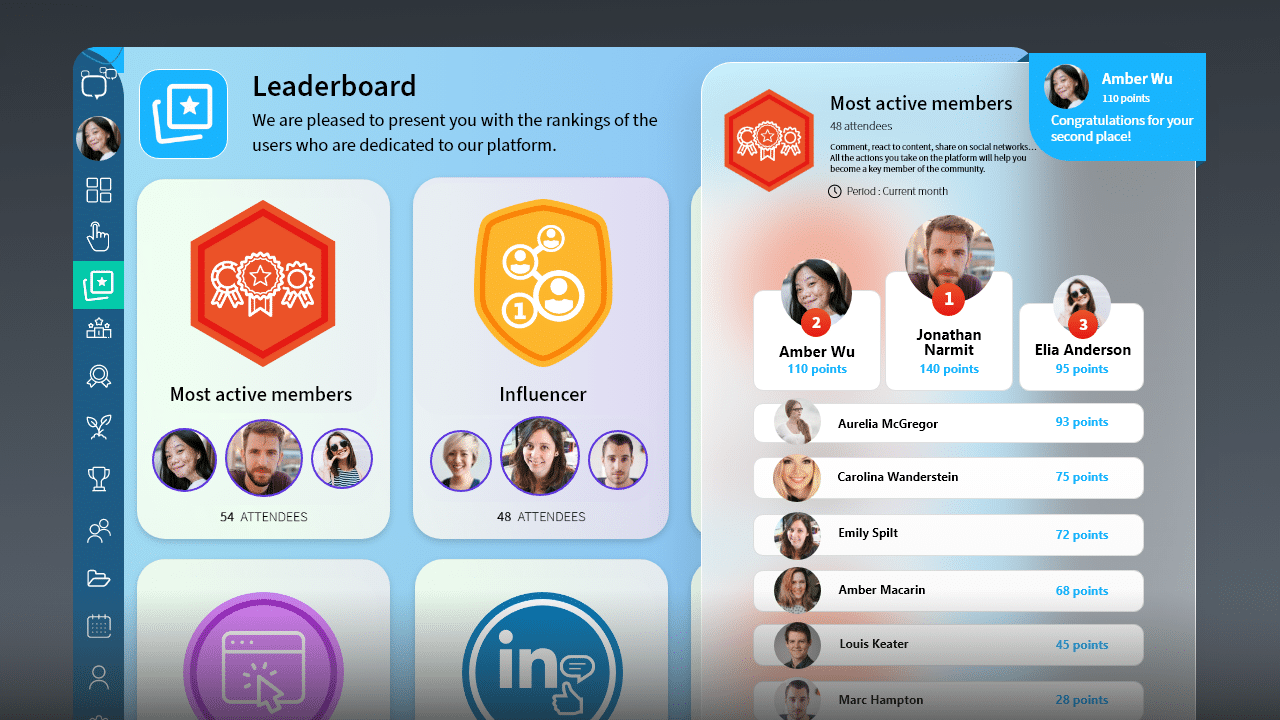
Sociabble comes with employee recognition features designed to highlight staff achievements.
Want to discover the full list? Read our expanded guide to internal communication tools.
Internal Communication Strategies
Great tools need great strategies. They can’t do it on their own. Here, we’ll cover proven approaches that help internal communication thrive, from building a feedback culture to making recognition part of everyday life.
1. Create a Culture of Recognition
Make sure employees are recognized and rewarded for a job well done, including peer-to-peer recognition. Dedicate specific team moments to recognizing achievement, boosting morale and providing motivation.
2. Strengthen Internal Communication
Provide leadership training and give managers the tools and space to connect directly with employees. Offer both top-down and bottom-up communication channels, with recaps to use analytics to measure effectiveness.
3. Foster Work-Life Balance
Team activities, company retreats, and work flexibility can lead to a healthy balance. Also consider adding health programs and CSR opportunities, so that work isn’t just about work. This will help with team spirit and morale, but also increase retention.
4. Leverage Technology for Engagement
Tech shouldn’t be a replacement for the human touch, but rather a tool to enhance it. Make sure employees feel like individual people and are treated as such. Use digital tools to bring in employees and catch their interest by focusing on what appeals to them as individuals.
Looking for more ideas? Check out our internal communication strategy guide.
Best Practices for Effective Internal Communication
What separates average internal communication from great internal communication? Well, we have a few ideas. These best practices offer a framework to ensure your efforts are heard, understood, and acted on.
1. Make Communication Two-Way
Too often, companies rely solely on one-way, top-down forms of communication. This stifles the employee voice and lowers engagement. It also prevents helpful ideas from making their way up to leadership.
2. Tailor Messages to Different Audiences
Personalization is key when it comes to internal comms. Creating segmented groups and targeting messages will improve relevance as well as information retention, while preventing information overload.
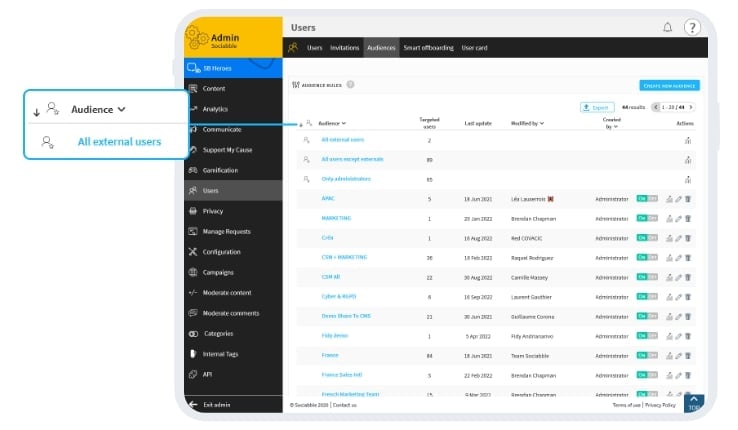
Sociabble gives you the ability to send personalized and targeted messages.
3. Leverage Multiple Channels
These days, information comes from all sides. Don’t rely on just one channel but connect to employees wherever they are and from multiple touchpoints. Email alone isn’t going to cut it anymore. Reaching everyone means leveraging multiple internal communication channels.
4. Keep It Clear, Concise, and Engaging
Clarity, simplicity, and concision are all things to strive for. Nobody wants to read a long, drawn-out text or watch a twenty-minute instructional video. Cut to the point and tell them what they need to know.
5. Measure and Adapt
Don’t rest on your laurels! Take regular measurements of key metrics and determine if your initiative is working. Identify pain points and make adjustments to maximize your communication program.
For more ideas, try reading our article on internal communication best practices.
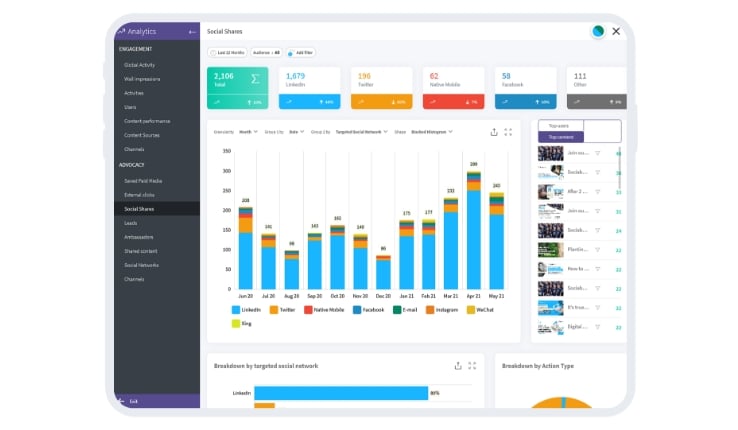
Sociabble’s analytics give you the power to gauge and adapt your internal comms strategy.
How to Measure Internal Communication Success
To maximize internal communication effectiveness, you have to keep this simple fact in mind: if you can’t measure it, you can’t improve it. Here’s a quick rundown of the metrics you want to keep track of, record, and improve.
- Employee engagement rates
- Email open and click-through rates
- Turnover rates
- Page visits and logins
- Employee feedback
- Customer satisfaction
For deeper insights, check out our article on internal communication measurement benchmarks.
Case Study: Sociabble’s Collaboration with AXA Group
What does internal communication success look like in action? This case study highlights how Sociabble partnered with AXA Group to engage tens of thousands of employees around the world.
AXA, a leading player in insurance, savings, and asset management, protects 93 million people across 51 countries. Obviously, such a global organization faces certain communication hurdles, including the need for a common information hub to inform and engage the entire workforce. AXA chose Sociabble to unify its global internal communications across office and frontline workers.
Together with Sociabble, they created the POP platform. With features like branded apps, gamification, and real-time analytics, AXA boosted employee engagement and made its comms more impactful, as part of a powerful digital transformation initiative.
The platform, powered by Sociabble, proved to be a smashing success. Thanks to its high adoption rate (98%), an internal survey revealed that POP has become the #1 source of information for 72% of employees, far ahead of traditional channels such as exchanges with managers and internal newsletters.
Proof of what can be accomplished when the right internal comms strategy meets cutting-edge technology.
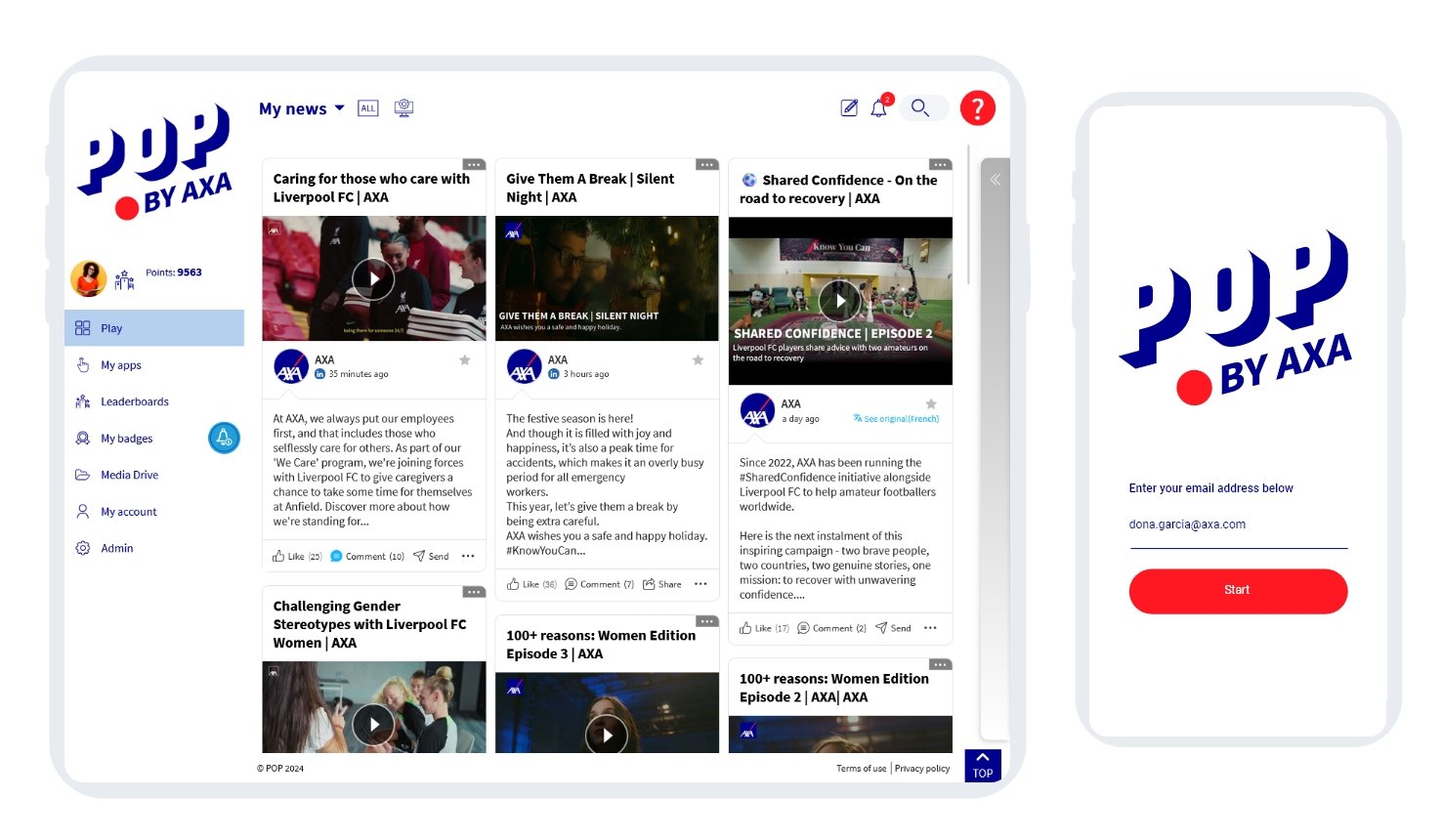
How Sociabble Makes Internal Communication Seamless
As shown in the case study above, Sociabble is more than a tool. It’s a complete employee communication solution that brings together everything you need to build a strong internal communication ecosystem. Features include:
- All-in-one platform for internal comms and employee advocacy
- Engaging UX for both desktop and mobile
- Seamless Microsoft 365 and Google Workspace integrations
- Smart segmentation for hyper-targeted content
- Gamification and CSR-powered engagement (like tree planting!)
- Real-time analytics to prove impact
Sociabble brings all of this together in a single, powerful, employee communication solution.
Internal Communication Trends & the Future
Internal communication is evolving fast. Here’s a peek into what’s shaping the future of employee connection, and what to keep an eye on as your own internal communication program evolves.
- AI-powered communication tools. This includes personalization and content generation, as well as features like real-time lip-sync translations; AI is no longer a trendy buzz word, but a critical component of comms technology.
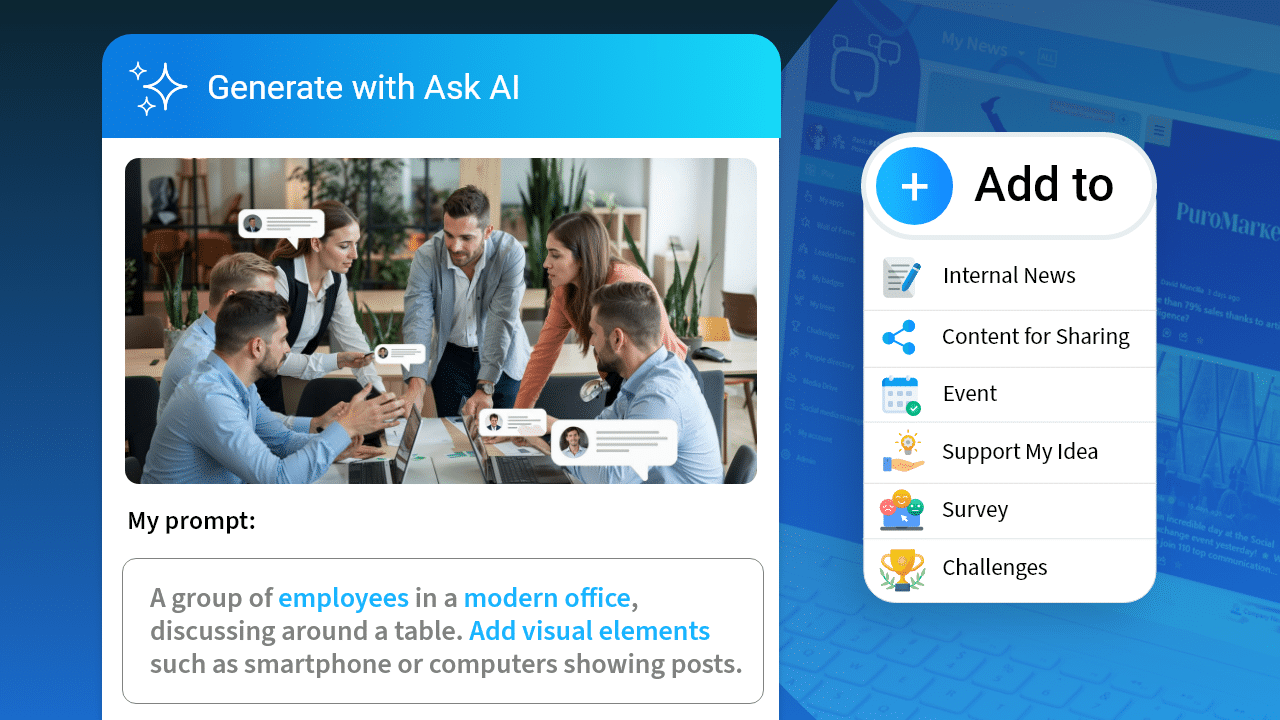
Sociabble’s cutting-edge AI makes content creation easy for employees and admins alike.
- CSR and purpose-driven communication. Social responsibility is increasingly a priority for employees, and the bottom line is no longer seen as the sole purpose of a corporation. Look for companies to integrate more social and charitable causes into their overall missions.
- Deeper integrations into daily workflows. Interconnectedness between devices and routines is the way of the future, and internal communications will follow suit. Chats, reminders, collaboration spaces, all of these will become more integrated into everyday life.
Want to know more? Find in-depth analysis in this article on internal communications trends.
Conclusion
We’ve reached the end of this ultimate guide. So to wrap up, let’s revisit what we’ve learned about internal communication, as well as its role in supporting any successful organization. In this guide we’ve covered:
- What is Internal Communication?
- Why is Internal Communication Important?
- Types of Internal Communication
- Internal Communication Challenges
- Internal Communication Tools
- Internal Communication Strategies
- Best Practices for Effective Internal Communication
And more. Additionally, we’ve also explained how Sociabble can help, serving as a fully-integrated, total internal comms solution. Because with the right strategy, tools, and platform—like Sociabble—you can build a more engaged, aligned, and empowered workforce. We’ve already partnered with global leaders like Coca-Cola CCEP, Axa, L’Occitane en Provence, and Primark, and we’d love to discuss ways we can help your organization, too.
Ready to put in place a new internal communications strategy? Let’s talk. Just sign up here for a free, personalized demo.
Want to see Sociabble in action?
Our experts will answer your questions and guide you through a platform demo.
